October 29, 2005
Measure “Q” – More Taxes For Poorer People
Somewhere There Has To Be An End To The Burgeoning Bureaucracies
By Fred H. Arm
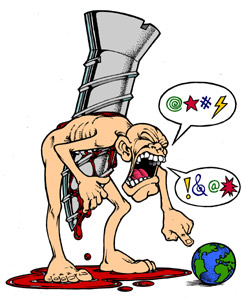
Recently I have again become besieged with pleas by Richmond government officials to vote for allowance of the sales tax to rise to the highest allowable rate in the state. The pleas are always the same – raise the taxes so that we can provide the public services we promised to provide you in the first place. To continue to pay more for what they have already agreed to provide, is only to reinforce the continued inefficiency, corruption, and lack of business acumen that bureaucracies are known for all over the world.
When I was in High School, some decades ago, our teachers told us that the private sector through taxation, worked hard to pay for governmental services we had no time or inclination to perform. One teacher explained to us that bureaucracies by their very nature grow exponentially over time. As you increase the size of the bureaucracy, you naturally have to increase the amount of money extricated from the people. By the very nature of the beast, it was self-perpetuating and growing by monstrous proportions. If we could have then seen how far government has grown today, we would have scoffed at the obscene difference in size and cost. Such continued unchecked growth of so-called public services could easily implode into a nation-wide financial disaster of biblical proportions.
There are some who declare the era of big government over says Clint Bolick, author of “Leviathan” (July 2004) and are dead wrong. In Leviathan, Bolick shows that, although the national government has downsized somewhat since the Reagan era, local government has grown exponentially. This ever-expanding beast, he explains, saps our nation's productive vitality and threatens us with "grassroots tyranny."

Drawing from his experience as an attorney with the Institute for Justice, Bolick uses illuminating cases from the litigation trenches to show how powerful local government has infringed on freedom of speech, freedom of commerce and enterprise, private property rights, and even the simple right to be left alone. He explains how locally controlled government school systems reflect the values of powerful interest groups and why—despite spending millions of taxpayers' dollars—they are unable to provide the basics of education and the like. Bolick ultimately reveals that, although the rules are often rigged in favor of local governments and against ordinary citizens, we can take action to rein in these out-of-control bureaucracies.
So where do we in Richmond begin? Perhaps by just saying no to increase in taxes would be a start. That may work for a little while, however the bureaucracies will not relent. If you will recall when Proposition 13 was voted in, the cities, state, and counties raised a hue and a cry that they could not survive. Amazingly, they did survive and not so amazingly, they creatively milked other sources for money to feed their insatiable appetite for continued expansion. They discovered that they could assess more taxes by calling them special taxes.
Take a look at your tax bill. You will see:
· WCCUSD parcel tax
· Mosquito & Vector Tax
· Emergency Med B
· AC Transit-Measure BB
· Richmond Sewer
· Richmond Storm Drain
· WCCUSD Assessment
· East Bay Trails LLD
· WCC Health-PRCL Tax
· EBRPD-Meas CC-ZN
On the “AD VALOREM side of your real estate taxes, in addition to your 1% Countywide tax you must add:
· City of Richmond
· BART
· East Bay Reg. Park
· West CC Unif Bond 2000
· WCCUSD 2002 Bond
· Comm Coll 2002 Bnd.
Now this is just your real estate taxes!
Now add to that mess:
· sales and use tax
· transient occupancy tax
· utility user tax
· documentary transfer tax
· motor vehicle fees
· franchise fees
· licenses and permits
· fines & forfeitures
· use of money and property
· revenue from other agencies
· charges for services
· indirect costs
· Street Maintenance from state gas taxes
· Pension Tax override for public safety

So what does this all mean? It means no matter whether you vote yes or no on this additional sales tax, the city, county, or state will figure out how to tax you in another more subtle fashion. They will continue to grow. They will continue to be increasingly inefficient. They will generate more legislation to expand their already bloated budgets. What you see is a monster in motion. It literally cannot be stopped until it self-destructs when there are no longer enough people out there willing and/or able to plough their hard-earned cash into government coffers.
Of course there is always a solution; however, it is doubtful that the bureaucracy will have the fortitude, desire, and/or courage to implement a remedy. The City of Richmond now takes in and spends $107,813,489.00 per year! This is an incredible amount of money! Of that sum it is interesting to note that almost 39%, (approx $41,000,000.00) is on the Police department. Studies have revealed that only about 20% of police department activities actually involve police activity. The rest is for maintenance and administration. So why not hire non-police personnel who do not cost so damn much money? That would be too easy.
In fact, even some communities in the United States either have abdicated policing to the state or have hired a private police force. Unfortunately, the Police unions and associations have put pressure on the state to stop using private police forces. Who’s the boss anyway? Are they public servants or are we here to serve them their bloated salaries, pension plans, and probably the highest benefit packages in America.
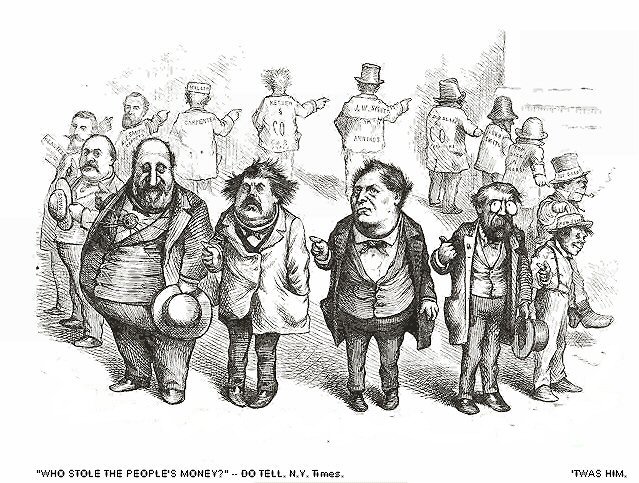
Of course I would like to see the police get a living wage; however, it seems that not only the police, but the entire city of Richmond staff and administration enjoy some extraordinary benefits that one would only expect in richer communities such as Beverley Hills or La Jolla. Richmond is for the most part a much poorer community than many others in the Bay area. I doubt that anyone will remedy this aberrant inequity in the very near future. Perhaps the system must first totally collapse and then we can start all over again. Perhaps for cities like New Orleans, Katrina was not such a bad idea. As for Richmond, I certainly hope we do not have to endure a disaster before we finally wake up.
October 25, 2005
Twice Is Nice, But Do We Really Need It?
N.I.C.E. Attempt Is No Phoenix Rising
By Fred H. Arm

Last night, the wannabe movers and shakers of the Point Richmond Business Association (PRBA) endeavored to resurrect the NICE (Neighborhood Improvement and Community Enhancement) Community Group calling it euphemistically “Twice is N.I.C.E.” or “NICE II”. After NICE was resoundingly defeated, the more hopeful members yearned for another bite at the apple. They convened a meeting, although this time open to all members of the community, at Our Lady of Mercy Parish Hall. Unfortunately, the turnout was a bit light.
On the agenda and vigorously discussed were such hot topics as the Trainmaster building status, PR Market remodeling, New tenants, the Plunge resurrection, Business/Neighborhood watch, Improvements to the Rose Garden, Fire station Planter box; pending Signage from freeway “biz dist” by the PRBA, Sign/map WWIC and a takeaway brochure, historic freeway signs, pass-through signs at walkways, “quiet Zone” update and more.

One of NICE’s principal protagonists, Richard Lompa, vented his spleen once again by attacking the City of Richmond, the Railroads, the PRBA, and the PRNA as being totally incompetent by allowing the closure of Cutting Blvd. to appease the Railroads rather than face the threat of extra lights on the train crossing at Richmond Avenue. He contends the Railroads were bluffing. He argued that even if the threat was real, it is a bad exchange to allow the traffic impediments that the road closure of Cutting has created. In the future, with the addition of many new residents in the Brickyard, the infill housing at the Point, and the increase of commercial construction, the traffic congestion, together with lack of available parking could be disastrous.
As the tenor of the discussion turned adversarial, it seemed to be scaring off several of the assembly who quietly left the arena. Marsha Tomassi really held her cool as the sparks flew and the optimism faded. By all outward appearances, it seems that NICE II was not getting off to a flying start. It was a good try, however, the lack of attendance and the spirit didn’t quite make it a resounding success.
It is always sad to see such beneficent efforts go unheeded, unfulfilled, and unappreciated. Perhaps a core meeting of the more committed would initially be more fruitful; however, I believe the downbeat reaction and antagonistic stance of the former naysayers may have irrevocably contaminated the spirit of the community. A “nice” try nevertheless. Good job Marsha, Andy, and Paula. It seems that your time is not yet ripe for fruition.
October 24, 2005
North Country – A Movie Review
Beauty Tames The Male Beast
By Fred H. Arm
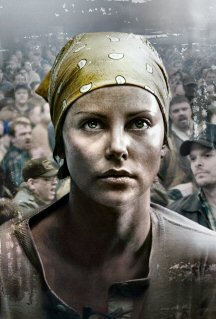
When you merge an extremely gorgeous woman and mother of little ones who has been abused by her ex-husband and who needs a job desperately, with a mining operation that employs mostly blue-collar workers, you have an explosive mix that spells sexual harassment with a capital “S”. When Josey Aimes (Academy Award winner CHARLIZE THERON) returns to her hometown in Northern Minnesota after a failed marriage, she needs a good job. A single mother with two children to support, she turns to the predominant source of employment in the region –the iron mines.
It’s an industry long dominated by men, in a place unaccustomed to change. Encouraged by her old friend Glory (Academy Award winner FRANCES McDORMAND), one of the few female miners in town, Josey joins the ranks of those laboring to blast ore from rock in the gaping quarries. She is prepared for the backbreaking and often dangerous work, yet coping with the harassment she and the other female miners encounter from their male coworkers proves far more challenging.
Times are tough. The last thing the miners want is women competing for scarce jobs –women who, in the men’s estimation, have no business driving trucks and hauling rock anyway. If these newcomers want to work the mines, they will have to do it on the terms set by the veteran workforce and it will not be easy. Take it or leave it.
When Josey speaks out against the treatment she and her fellow workers face she is met with resistance – not only from those in power but from a community that doesn’t want to hear the truth, her disapproving mother (SISSY SPACEK), her sullen, rejecting father (RICHARD JENKINS), and many of her own colleagues who fear she is only making things worse. In time, even her friendship with Glory will be tested. Her already difficult connection with her father, a lifelong miner, will be pushed to its limit and elements of her personal life will be exposed to scrutiny. The fallout from Josey’s battle to make a better future for herself and her children will affect every aspect of her life, including her relationship with her young daughter and her sensitive teenage son, who must first cope with the embarrassment of his mother’s sudden notoriety and then face harsh details of her past she was hoping he would never have to know.
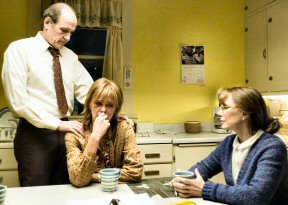
Through these struggles, Josey will find the courage to stand up for what she believes in –even if that means standing alone. Inspired by a true story, “North Country” follows Josey’s journey on a road that will take her farther than she ever imagined, ultimately inspiring countless others, and leading to the nation’s first-ever class action lawsuit for sexual harassment.
When Josey takes a stand against the mining company where she works, “she isn’t looking to become a leader or make a statement,” says “North Country” director Niki Caro, whose insightful direction and screenplay for 2002’s magical Whale Rider earned accolades worldwide. “She just wants what every parent wants, to make a decent life for herself and her family.” It starts out just that basic and personal. “She doesn’t realize she is launching herself into the battle of her life.”
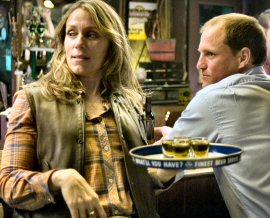
Josey’s growing commitment to be heard finally finds an unexpected ally in Bill White (Academy Award nominee WOODY HARRELSON), a hometown lawyer newly returned from his own personal and professional disappointments in New York. Knowing she has little chance of winning on her own, White attempts to break legal ground with Josey by filing an unprecedented class action lawsuit for sexual harassment – provided they can get others to join in.
It is a little incredulous to see such a beauty amongst the apparent bull dykes working at the mine, who incidentally are also sexual harassed by the men, if you can believe that one. The initial switching back and forth with flashbacks are a little confusion, however, the film soon settles in as the drama unfolds. Surely Charlize will get another Academy Award nomination for her role, as well may Richard Jenkins as best supporting actor who plays her father. He is a character that most everyone has seen in supporting roles, yet is doubtful that few can remember what his name is.
This is an outstanding film that is well paced and deeply involving. Women most particularly will be inflamed and then vicariously enjoy evening the score. The courtroom scene has great dramatic moments to relish; however, stretches the realm of reality and credibility somewhat. Outstanding performances by many of the cast make this film a feast for discriminating viewers. Crisp writing by screenwriter Michael Seitzman with such lines by WOODY HARRELSON as he is fending off the affections of a much younger woman like, “I’ve got underwear that’s older than you”, are priceless. Do not miss this one, but leave the kids at home.
October 16, 2005
Richmond’s Violence Conference
A Nice Beginning, But No Cigar
By Fred H. Arm
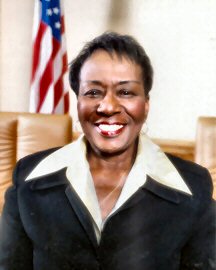
The keynote speaker, Deborah Prothrow-Stith, associate dean of the Harvard School of Public Health and co-author of "Murder Is No Accident," told the eager assembly that significant action must be undertaken to ensure that today's 8-year-old doesn't succumb to violence in 10 years. Offering hope for the beleaguered community, Dr. Stith pointed out that "Children who watch their mother beaten on Sunday and sit in school on Monday need more from their parents and teachers than punishment when they misbehave." The good news is that it's preventable," said the prime mover of the successful Boston violence-prevention plan. "Violent behavior is not genetic, nor is it an immutable part of the human condition."
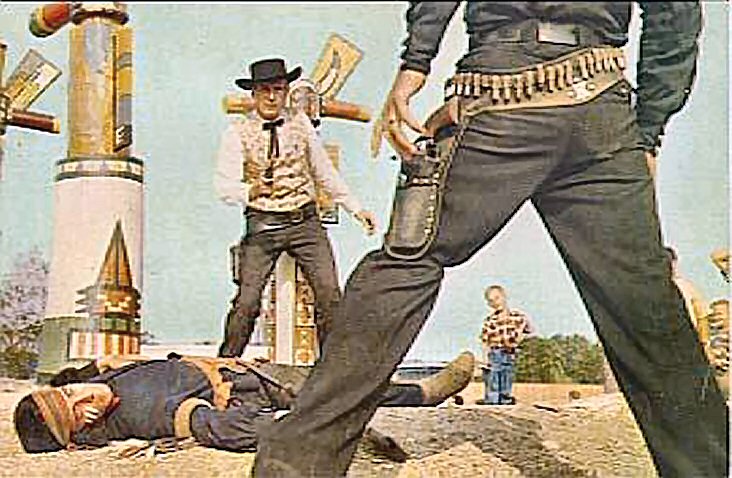
After Dr. Stith’s excellent presentation, the program was quickly eroded by two peace officer presentations. The FBI presentation by Robert Lasky, a FBI supervisory special agent who specializes in tracking gangs, was extremely difficult to sit through. Lasky was a stereotypical cop who seemed to have the understanding and empathy of a block of ice. He had many statistics to back up how horrible the gang situation has become; however, his primary solution was to “put away” the offenders for as long as possible. A solution that will most likely fail. The United States has declared war on drugs with its “get tough on crime” stance for at least forty years. It seems we are no further ahead today than we were forty years ago. What he does not grasp is that violence is a social disease that cannot be simply remedied by more law enforcement alone.
Our own local interim police chief, Terry Hudson, followed with his rather meager presentation that was hardly a confidence builder. This city spends about 37% of its budget, almost $40,000,000.00 per year on the police force. Is this the best we can do?
Following the lame law enforcement production, we launched into a roundtable, brainstorming discussion with approximately 100 teenagers and 200 adults. Unfortunately, the round-table was much too large (some 30 feet in diameter) to allow any real creativity and intimacy to spring forth, it was too noisy, and the facilitators were unable to inspire any confidence or leadership that could lead to any viable solutions.
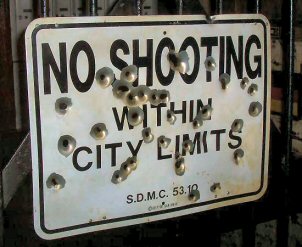
The groups were allowed to vote on their own pet issues they wanted implemented without any expertise as to what really was needed to implement a broad-spectrum approach to this rather monumental problem. Many apparently emotional ideas were offered primarily dealing with the elimination of guns as a solution to violence. Only a few members of the group really understood that guns were merely an instrument of violence and not a solution in and of themselves. If you eliminate guns from the gangsters, they would use swords. If you eliminate swords, then knives, clubs, hands, and what have you would be used to slay their adversaries. It is much to narrow a scope to have any efficacy.
The group made numerous forays into band-aid remedies such as gun turn-in programs, afterschool programs, opening community centers, etc.; however, they failed to realize that it will take all of these pro-offered remedies, not just here and there. None of the groups addressed what these programs would actually consist of, nor was there any understanding of the costs that would be incurred. After about thirty minutes of frustration, I couldn’t stand it any longer and just had to get out of there.
About two months ago on August 8th, the movers and shakers in Richmond attended a Coalition On Violence conference at Kaiser’s conference hall. At the meeting, an impressive array of dignitaries and helper organizations attended, consisting of local government offices, such as George Miller's Office, John Gioa's Office, the Sheriff's Office, Neighborhood Councils, Mayor Anderson's Office, City Council people, various non-profit entities that are engaged in preventing violence and helping youths find their way in Richmond, several physicians, the Chamber of Commerce, religious leaders, teachers, psychologists, the Chief of Police, probation officers, Parks and Recreation, and many others. After hearing exceptional and scholarly presentations from each of the participants, it seems that a viable coalition would soon be born consisting of very highly competent and motivated people.
This quality of attendees is what was missing from Saturday’s conference. These groups are already in place, they have their own funding, and are much more cognizant of what is needed to make a difference. I was very optimistic that this group, with its superior knowledge and skill, would be able to promptly come up with a collective plan to deal with Richmond’s violence efficiently, effectively, and without having to go through the long painful process of “reinventing the wheel”.
Some of the solutions could consist of:
· After school and evening classes to develop communications skills, parenting, and conflict resolution;
· Experts could be employed to mediate domestic conflicts and neighborhood adversity;
· Mentoring programs could be set up;
· Seniors could be utilized for after shool care, mentoring, training, and supervision;
· On-the-job training could be provided for youths at special sites or at employer’s locations;
· Alternative programs to incarceration could be designed;
· Special training camps could be set up for teaching new communication skills and conflict resolution.
With such a combined effort by the highly qualified and diverse group of the August 8th Coalition, Mayor Anderson’s and Dr. Stith’s dream would have had a significant shot at becoming a reality. Although Saturday’s enthusiastic coalition of community members, administrative staff and teenagers were highly motivated, well-meaning, and organized, it is highly doubtful that anything meaningful or effective would ever come out of it. Let the experts do what is needed to finally make this city a safe place to live and raise children.
October 09, 2005
“The Future of Food” – A Documentary Film
A Scary Peek Behind The Scenes of Genetically Altered Food
By Fred H. Arm

In relative silence, the new documentary “The Future of Food” exposes a revolution that is happening in the farm fields and on the dinner tables of America -- a revolution that is transforming the very nature of the food we eat. In this documentary produced and directed by Deborah Koons Garcia, we are offered an in-depth investigation into the disturbing truth behind the unlabeled, patented, genetically engineered foods that have quietly filled grocery store shelves over the past decade. This food revolution has gone on virtually silent with only a smattering of information exposed to the public view.
Although another food revolution that has swept the country in the form of the proliferation of farmer’s markets, organic produce and healthier choice in restaurants, this other silent revolution on a grander scale threatens to change the what we eat whether we like it or not. Over the past ten years, with the advent of genetic engineering and the massive expansion of pesticide companies like Monsanto into the seed business, the very nature of our food system has radically changed with potentially disastrous effects on our food security.
Patenting of life is now permitted, no labeling of genetically modified organisms (GMO’s) in food is required, research is conducted on these issues by universities beholden to the “agri-corp” who fund them, and the major regulatory agencies are run by former executives from these companies. The average American remains blissfully ignorant that they are eating GMO food and supporting the aggressive “corporatization” of their food sources.
In fascinating and accessible terms, this film illuminates the major issues that ultimately affect all of us—some surreal, some futuristic, and many really frightening. Yet, this picture offers some hope by exposing the industry through insightful and moving interviews with farmers, agriculture, policy makers, and business experts. The film envisions an informed consumer demanding natural and healthy foods sources that insure environmental integrity without fear of eating what is on our plates.
From the prairies of Saskatchewan, Canada to the fields of Oaxaca, Mexico, this film gives a voice to farmers whose lives and livelihoods have been negatively impacted by this new technology. The health implications, government policies, and push towards globalization are all part of the reason why many people are alarmed by the introduction of genetically altered crops into our food supply. Many viewers will be outraged by the mercenary treatment of farmers by the giant seed producers like Monsanto. The film explores the extraordinary injustices perpetrated daily upon the little farmers through sympathetic courts who usually favor the “big boys” over the farmers.

Shot on location in the U.S., Canada, and Mexico, “The Future Of Food” examines the complex web of market and political forces that are changing what we eat as huge multinational corporations seek to control the world's food system. The film additionally explores alternatives to large-scale industrial agriculture, supporting organic and sustainable agriculture as another viable solution to the farm crisis of today.
An immensely important film well worth your time and involvement. To ignore the crisis presented by this film is to tolerate a potential impairment to your own health and perhaps invite a premature death.
“Howl Redux”
A Time For Remembrance or Rebirth of a Transformation
By Fred H. Arm
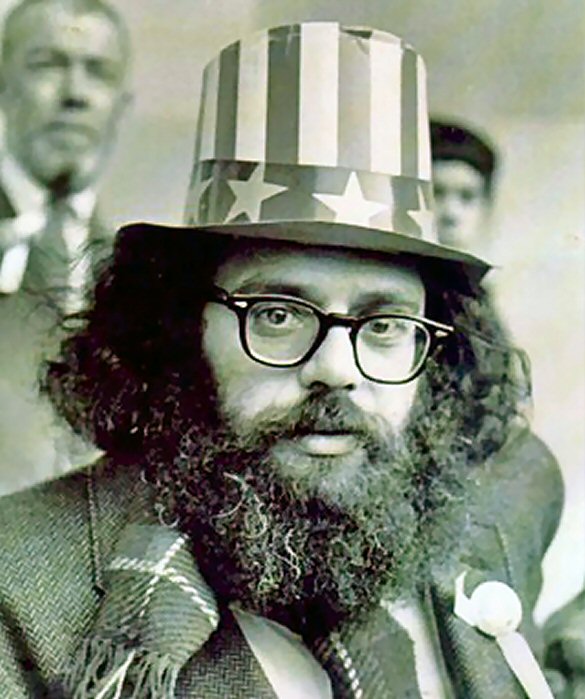
Last Friday night I had the fortune or some would say the misfortune of attending the “Howl Redux at the Herbst Theater across from the Civic Center of San Francisco. Litquake and City Lights presented a series of literature and poetry readings celebrating the birth of the beat generation some fifty years ago led by Allen Ginsberg, Jack Kerouac, Michael McClure and others. Even old non-beatnik authors like Mark Twain and Gertrude Stein were featured with excerpts from their writings. Michael McClure is the only survivor of the group and we had the privilege to listen to him personally read his stuff. Other luminary readers included Oakland’s mayor, Jerry Brown, actor Peter Coyote and an archival video of Allen himself bellowing his poem “Howl” in an angry, unintelligible, and hurried staccato.
Fifty years ago America was just recovering from World War II and had developed into a repressive and paranoid society led by the Communist Witch hunter, Joe McCarthy. It was not a pleasant time for the people. The extremely unpopular so-called “police action” in Korea had fanned the flames of suspicion, providing fertile grounds for the pursuit of Communists under everyone’s bed. People felt not only in danger from Communists, they also feared the wrath of the government through McCarthyism and the intolerance of their police agencies. It was the age of “blacklisted” actors, writers, and entertainers. There was a lot of frustration, fear, anger, and fomenting unrest. Such was the fertile ground for the likes and birth of poets like Allen Ginsberg.
It was in San Francisco where all this antagonistic, rebellious, and frustrated poetry was first unleashed, with Ginsberg as the patron saint. So once again, fifty years later, we were once again treated, or perhaps exposed would be a better word, to the outraged words that changed the nation and its institutions. Here is a sample from Ginsberg’s “Howl”
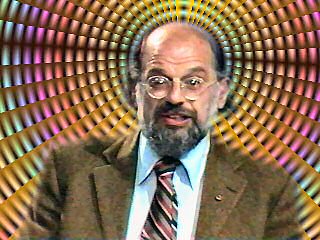
I saw the best minds of my generation destroyed by madness, starving hysterical naked,dragging themselves through the negro streets at dawn looking for an angry fix,
angelheaded hipsters burning for the ancient heavenly connection to the starry dynamo in the machinery of night,
who poverty and tatters and hollow-eyed and high sat up smoking in the supernatural darkness of cold-water flats floating across the tops of cities contemplating jazz,
who bared their brains to Heaven under the El and saw Mohammedan angels staggering on tenement roofs illuminated
who passed through universities with radiant cool eyes hallucinating Arkansas and Blake-light tragedy among the scholars of war,
who were expelled from the academies for crazy & publishing obscene odes on the windows of the skull,
who cowered in unshaven rooms in underwear, burning their money in wastebaskets and listening to the Terror through the wall,
who got busted in their pubic beards returning through Laredo with a belt of marijuana for New York.
It was quite an experience once again hearing the “Howls” of fury and frustrations of the “beat” poets who set the stage for the next decade of revolution ultimately transitioning into the hippie culture of the 60’s. The lengthy production was at times very upsetting and occasionally tedious. Yet, it struck a chord in harmonization with the angers and frustrations we are living today. The pendulum seems to have swung back in time where we have once again become more repressive, spawning a greater gap between rich and poor, more paranoid, and once more fighting an unpopular war. Perhaps the words and sentiments of Allen Ginsberg and his lot have yet again a resonant ear with the people of the Bay area.
See more on Ginsberg at: http://www.popsubculture.com/pop/bio_project/allen_ginsberg.html